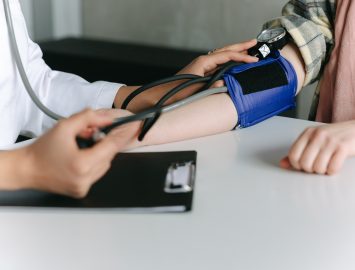In the complex world of healthcare, why is it so crucial to tackle medical errors? Understanding the significance of addressing medical errors goes beyond just fixing mistakes—it’s about ensuring everyone gets the best care possible. Medical errors aren’t just isolated problems; they affect how much people trust hospitals and doctors.
In this blog post, we’ll discuss the startling facts about medical errors that make them a leading cause of death. We’ll take a closer look at the impact of medical errors and what we can do to make healthcare safer for everyone. So let’s get started!
Understanding Medical Errors
Medical errors, a disquieting reality in healthcare, encompass a spectrum of oversights that can have far-reaching consequences. To comprehend the gravity of these errors, we must explore their various types and the contributing factors that make them a persistent challenge in healthcare settings.
Types of Medical Errors
- Diagnostic Errors
Diagnostic errors represent a significant facet of medical mistakes. Often stemming from misinterpretations or inadequate testing, these errors can lead to delayed or incorrect treatments. Understanding the nuances of diagnostic errors is crucial in enhancing accuracy and timely interventions.
- Medication Errors
Medication errors pose substantial risks to patient safety. These can range from administering the wrong dosage to prescribing the incorrect medication. Examining the landscape of medication errors sheds light on the importance of precise administration and vigilant oversight.
- Surgical Errors
Among the most severe medical errors, surgical errors involve procedures performed on the wrong body part or even the wrong patient. Delving into the details of surgical errors underscores the need for stringent protocols and improved communication within surgical teams.
Contributing Factors to Medical Errors
- Communication Breakdown
Communication breakdowns within healthcare settings are a recurrent theme in medical errors. Inadequate information transfer among healthcare professionals can lead to misunderstandings and mistakes in diagnosis and treatment.
- Lack of Standardized Procedures
The absence of standardized procedures contributes significantly to medical errors. Inconsistent protocols and practices create fertile ground for mistakes, emphasizing the need for uniform guidelines to enhance patient safety.
- Systemic Issues in Healthcare
Systemic issues, rooted in the structure and organization of healthcare systems, play a role in perpetuating medical errors. Addressing these issues requires a holistic approach, acknowledging and rectifying systemic flaws to ensure patient well-being.
The Human Cost of Medical Errors
Delving into the aftermath of medical errors reveals a profound and often overlooked aspect—the human cost. Beyond statistics, this section explores the tangible impact on patients and their families and the emotional toll healthcare providers bear.
Real-life Impact on Patients and Families
The repercussions of medical errors extend far beyond clinical settings, leaving indelible marks on the lives of patients and their families. From compromised health outcomes to enduring emotional trauma, the real-life impact can be devastating. Unraveling the stories of those affected provides insight into the depth of these consequences and emphasizes the urgency of error prevention.
Emotional Toll on Healthcare Providers
While healthcare providers are dedicated to healing, the weight of unintentional harm can take a toll on their emotional well-being. Navigating the aftermath of a medical error involves not only addressing the immediate clinical concerns but also grappling with the emotional burden. This subsection explores the emotional complexities faced by healthcare providers, shedding light on the human side of the medical profession.
Economic Consequences of Medical Errors
Beyond the emotional and physical toll, medical errors also carry significant economic ramifications. Patients may incur additional medical expenses to rectify the mistakes, and families may face the financial burden of long-term care or legal proceedings. Examining the economic consequences underscores the need for comprehensive strategies to minimize errors, benefiting patients and the healthcare system.
Recognizing the Signs of Medical Errors
Medical errors, often subtle in their early stages, can have significant consequences if not identified promptly. Recognizing the signs is pivotal for patients and caregivers to actively engage in their healthcare journey and contribute to error prevention.
Importance of Patient Advocacy
Patient advocacy is the cornerstone of recognizing potential medical errors. Being an advocate involves actively participating in one’s healthcare, asking questions, and staying informed. Changes in treatment plans, unexplained symptoms, or discrepancies in medical records can be early signs that warrant attention. By understanding the importance of being an advocate, patients position themselves as integral partners in their care.
Red Flags for Patients and Caregivers
Awareness of red flags equips individuals with the knowledge to identify potential issues. Unusual side effects from medications, unexpected complications after a procedure, or persistent symptoms that don’t align with the provided diagnosis may signal a problem. Recognizing these red flags empowers patients and caregivers to seek clarification and further evaluation, preventing the escalation of potential errors.
Reporting and Discussing Concerns with Healthcare Providers
Open communication is a powerful tool for recognizing and addressing medical errors. Patients should feel encouraged to report concerns promptly. Whether through formal reporting mechanisms or direct discussions with healthcare providers, expressing worries about changes in health, unexpected outcomes, or uncertainties about treatment plans is vital. Establishing this communication channel fosters a culture of transparency, enabling early intervention and continuous improvement.
Strategies for Prevention
In navigating the complex healthcare landscape, pursuing the prevention of medical errors takes center stage. This section outlines practical and effective strategies to reduce errors, enhance patient safety, and foster a culture of continuous improvement within healthcare systems.
Implementing Technology for Error Reduction
Leveraging technology, such as electronic health records and barcode medication systems, is pivotal for minimizing manual errors and ensuring seamless information flow in healthcare settings. These tools streamline processes, providing accurate diagnosis, prescription, and treatment.
Improving Communication in Healthcare Settings
Enhancing communication involves standardized protocols and open dialogue among healthcare professionals. Clear channels for information transfer, regular team briefings, and fostering a culture of openness significantly reduce the risk of misunderstandings and errors in patient care.
Continuous Training and Education for Healthcare Professionals
The dynamic nature of healthcare demands ongoing professional development. Regular training, workshops, and educational programs equip healthcare professionals with updated knowledge, fostering a culture of learning and improvement. Staying abreast of advancements ensures a high standard of care and minimizes the risk of errors.
Legal Implications and Patient Rights
Understanding the legal landscape is crucial for affected individuals and the broader healthcare system in the aftermath of medical errors.
Legal Recourse for Victims of Medical Error
Victims of medical error have the right to pursue compensation for damages resulting from negligence. This pursuit fosters accountability and contributes to ongoing improvements in healthcare practices.
Patient Rights in the Context of Medical Treatment
Foundational to ethical healthcare, patient rights concerning medical treatment include informed consent, privacy, and the right to quality care. Awareness of these rights empowers patients to participate actively in decisions about their health.
The Role of Medical Malpractice Insurance
Medical malpractice insurance protects healthcare providers from potential litigation. Simultaneously, it ensures that individuals affected by medical errors have avenues for seeking compensation, maintaining a balance between safeguarding professionals’ and patients’ interests.
The Role of Advocacy Groups
Advocacy groups are instrumental in healthcare safety, amplifying the voices of those affected by medical errors. These groups shape a healthcare environment focused on continuous improvement by driving policy changes, promoting transparency, and holding institutions accountable.
Their efforts extend to educating the public, empowering individuals to recognize risks, and actively participating in their healthcare. Advocacy groups serve as catalysts for change, fostering a culture that prioritizes patient well-being and prevents future medical error.
Thomas & Wan, LLP: Champions for Medical Malpractice Victims
How can legal experts become champions for those impacted by medical malpractice, especially in a landscape where errors rank as a leading cause of death? At the heart of Thomas & Wan, LLP‘s advocacy is a wealth of expertise in medical malpractice law. Linda Thomas and Michelle Wan bring over 55 years of combined experience, positioning themselves as seasoned professionals with an intricate understanding of the legal complexities surrounding medical errors.
Thomas & Wan’s commitment to justice is underscored by their track record of noteworthy successes. Having resolved numerous multi-million dollar cases nationwide, the firm has become synonymous with effective advocacy. Their accomplishments range from cases of surgical mistakes to birth injuries, showcasing a dedication to securing substantial outcomes for those affected by medical errors.
If you or a loved one have been affected, contact Thomas & Wan for steadfast advocacy in navigating the aftermath of medical malpractice. Contact us today to protect your rights!




